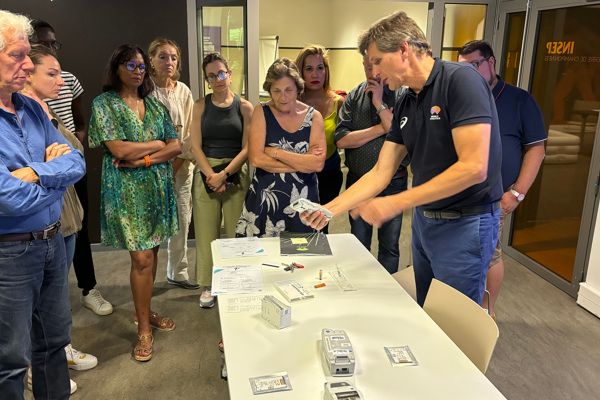- The World Endurance Medicine Academy is a joint venture between the World Athletics Health and Science Department and the International Racing Medicine Institute
- The Academy’s goal is to develop healthcare professionals supervising medical support at endurance events through education and training worldwide.
Expertise on the prevention, diagnosis and management of endurance sports-related illnesses at the Paris 2024 Olympic Games was shared during a series of training sessions recently delivered by World Athletics Health and Science.
Continuing the work of the World Academy of Endurance Medicine (WAEM) to safeguard athlete health, the training sessions involved medical staff who will operate at a range of endurance sports venues at the Games, not just athletics.
More than 60 healthcare professionals benefited from online training followed by hands-on training sessions on the diagnosis and treatment of exertional heat stroke and exercise-associated hyponatremia, two potentially life-threatening conditions that can affect endurance athletes.
WAEM, powered by World Athletics, is an educational entity that was established in 2021 when the International Institute of Running Medicine partnered with World Athletics Health and Science. Over the past three years, WAEM has grown exponentially, hosting Running Emergency Medicine Courses (REMC) around the world and training and certifying hundreds of healthcare professionals, resulting in an overall increase in medical services provided to hundreds of thousands of runners.
Following the integration of the Union Cycliste Internationale (UCI) and World Triathlon as WAEM partners, and in view of the upcoming Olympic Games in Paris, WAEM has developed a partnership with the Paris 2024 Organising Committee. The knowledge developed by WAEM staff in the prevention, diagnosis and management of pathologies related to endurance sports, such as exertional heat stroke and hydration-related pathologies, has been an asset for the medical management of Paris 2024, filling an identified knowledge gap. Furthermore, the alarming scenario of a heatwave likely to hit the French capital during the Games has reinforced the need for this collaboration.
Following the online training sessions, the practical training provided by the World Athletics Health and Science department took place on 24 and 29 June.
A World Academy for Endurance Medicine training session ahead of the Paris Olympics (© World Athletics Health & Science Department)
Heatstroke is a disease characterized by neurological symptoms and a body temperature above 40°C. It must be treated on site, on the racecourse or at the finish, using cold water immersion baths, under the supervision of trained health professionals and volunteers. Rapid local treatment is essential, but it requires organization, specific equipment and supplies in large quantities, such as ice and water. All these aspects were part of the educational content provided by WAEM staff to their French colleagues.
Exercise-associated hyponatremia is another potentially life-threatening condition triggered by excessive water consumption. This is a potential threat, especially for the thousands of runners who will participate in the “Marathon for All,” a mass endurance race during the Paris Olympics. WAEM’s strong relationship with Siemens Healthineers is strongly addressing this issue. Siemens Healthineers will provide ePOC® point-of-care devices during the Olympics, while WAEM staff have provided training to Paris 2024 medical staff on how to use the devices and measure sodium and other biochemical parameters.
However, as Frédéric Garrandes, Scientific Director of World Athletics Health and Science, explains: “Intervention represents, to some extent, the failure of prevention. Thanks to this training, the medical staff in Paris are now prepared to quickly identify and optimally treat these pathologies, but it is essential to continue to transmit the right prevention messages to elite athletes and amateur athletes competing in Paris.”
“First, heat acclimatization is easy to do and is by far the best preventative measure to compete safely in hot and humid conditions (Beat the Heat pamphlet). Second, it is important to ensure good hydration levels, but endurance athletes should not overhydrate. Therefore, the best thing to do is to drink until thirsty.”


